How to Clone Windows 10/8/7 to Another Computer
Why Need to Clone Windows 10 to a New Computer
"I have a new laptop to replace my old computer as it becomes slower and slower after running for a few years. The problem I'm facing now is that how can I keep the Windows 10, programs, and files the same as the old PC. I don't want to reinstall Windows and applications. Is there a quick and easy way to do that?"
Many users have the same confusion as to the one above. Planning to switch to a new computer, but don't know how to migrate the Windows and data on the old PC. Instead of wasting time re-installing system, applications, and files, you can use the methods here to finishing cloning your PC efficiently.
Suppose you only need to clone Windows 10 and applications to the new computer, you can go to use powerful backup software to transfer system.
How to Clone Windows 10 to Another Computer
To set Dell factory restore seems not really that complex but a little bit complex for ordinary users. Here in this passage, you'll find two secure and highly recommended ways to help set dell factory restore.
1. Backup data and set Dell factory restore manually
Whenever we discuss cloning Windows 10 from one computer to another, compatibility and start-up issues are our top concerns. Since most hardware requires the appropriate drivers to run, you cannot simply move the system to a new computer with a different hardware configuration, and hope that the system can run normally.
To avoid these worries and clone the Windows system without removing and installing disk, we highly recommend you try the "System Transfer" function provided by Qiling Backup. This tool can help you to clone Windows 10 from the old computer to the new one with a bootable disk. And it ensures a successful system boot-up from cloned hard drive on the new computer. Now, prepare a proper WinPE emergency disk/USB, and let's begin to clone a PC by creating a Windows 10 system backup.
Step 1. Create an Emergency Disk to USB
1. Connect an empty USB flash drive or external hard drive (with over than 100GB space) to your PC.
Note: Initialize the USB or external hard drive as MBR, and create two partitions: set the first partition as FAT32 and the second partition as NTFS.
2. Run Qiling Backup and click "Tools" > "Create bootable media".
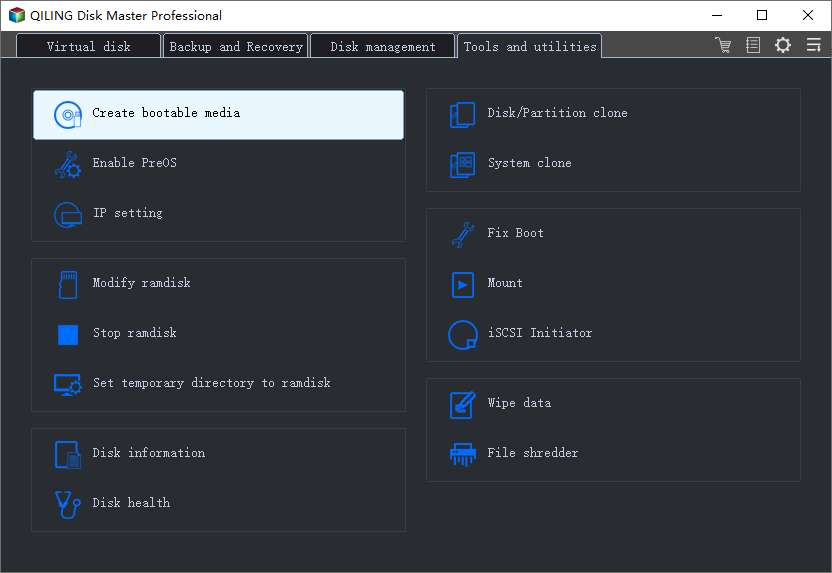
3. Choose USB as the disk location to create the emergency disk and click "Proceed".
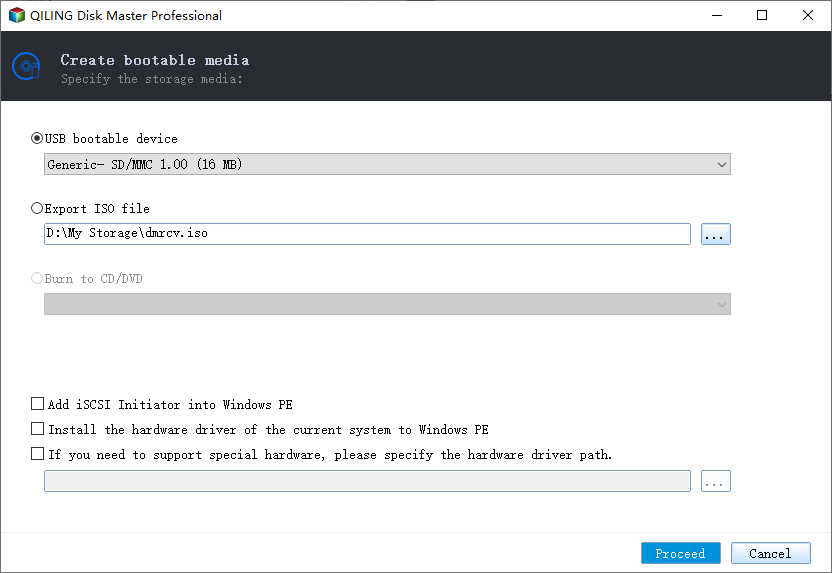
The bootable disk will help you boot computer and transfer system image to the new PC.
Step 2. Create System Backup Image on Source Computer
1. Click "System Backup" on the top pane and Windows OS will be selected by default.

2. Click Browse icon and specify the second partition of the USB drive which contains the emergency disk to save system image.
You may also save system backup image to another empty external disk (which must be equal or bigger than the system C drive).
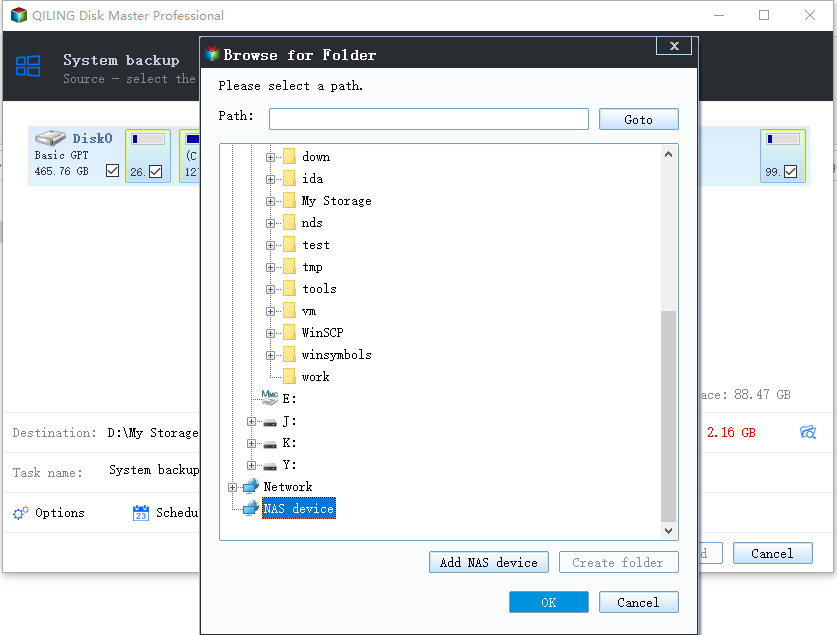
3. Click "Proceed" to start creating a system backup image to the target device.
Step 3. Boot Target Computer from Qiling Backup Emergency Disk
1. Eject Qiling emergency disk and system backup image USB and connect it to the new computer.
2. Restart PC and press "F2/F8" to boot into BIOS.
3. Go to the boot menu and set the computer to boot from the Qiling Backup emergency disk.
If you want to restore the system image to a GPT disk, you need to change the boot mode to EUFI in BIOS. Then your computer will enter Qiling Backup main interface.
Step 4. Transfer System to the New Computer
Note: Restoring system image to the new computer will erase the data on the target disk. Remember to back up the files in advance or use an empty disk to restore the system image to avoid data loss.
1. On Qiling Backup main interface, click "Browser to Recover" to start.

2. Select the system image on your USB external drive and click "OK" to continue.
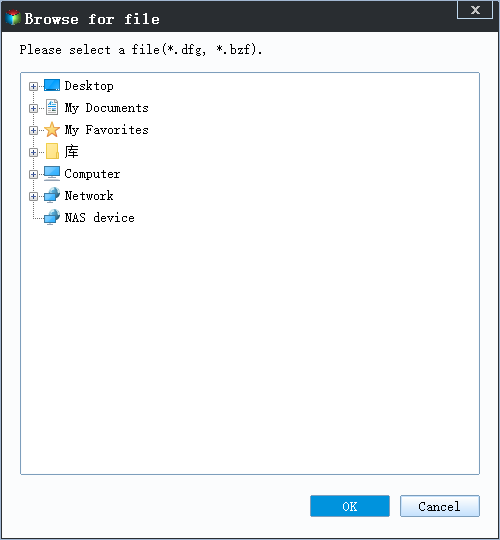
3. Specify the disk to restore system image and tick "Universal Restore" option.
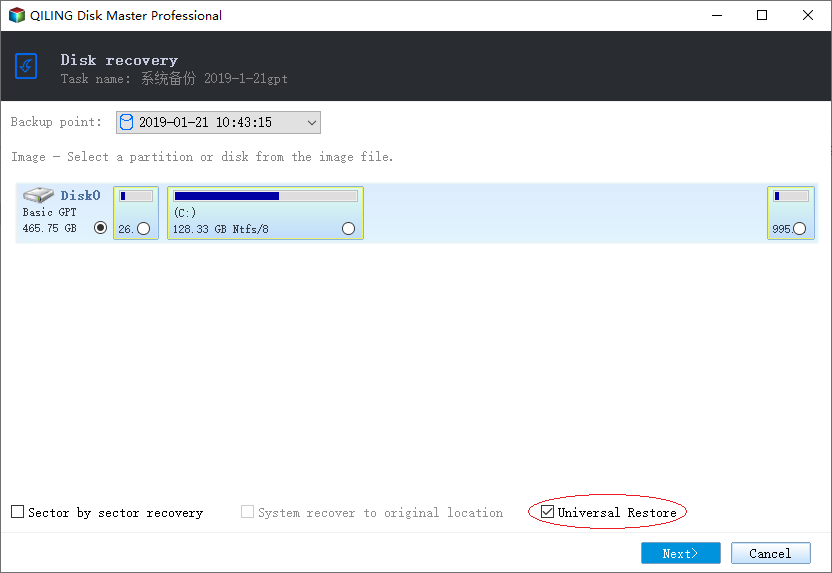
4. Select the destination disk and click "Next" to continue.
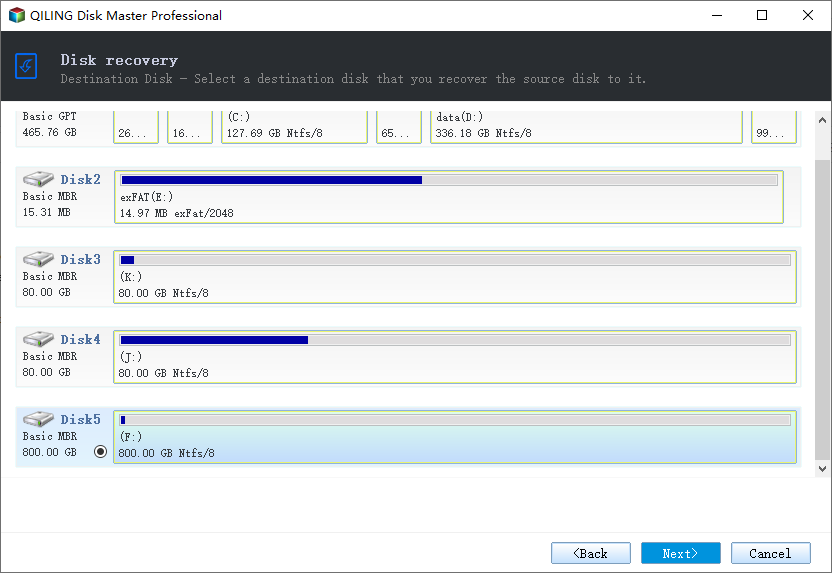
5. Click "Proceed".
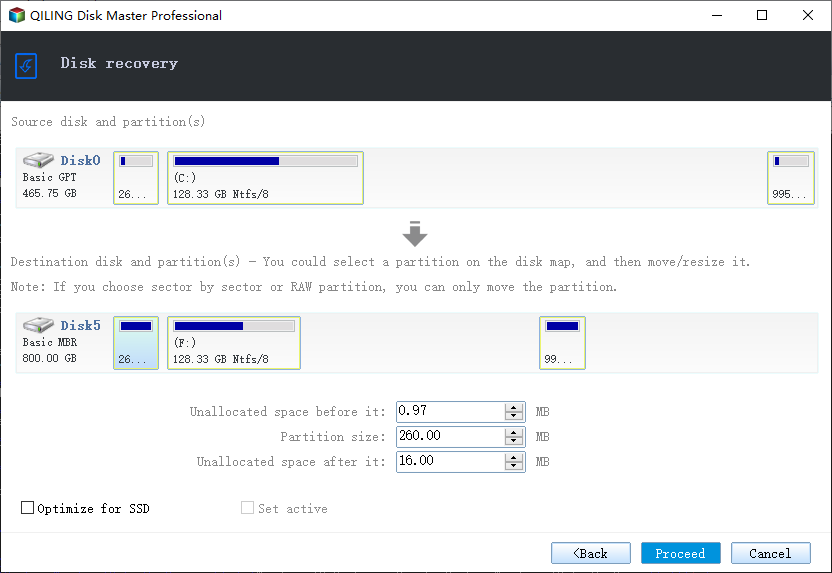
Step 5. Restart PC with transferred system
1. Enter BIOS and set computer to boot up from the drive with the transferred system.
2. Save all changes and restart your computer.
3. Update all drive drivers and programs to ensure all things will work just fine on the new computer.
When the system transfer accomplishes, Windows 10/Windows 7 and most applications will work on your computer. In case you have some software installed on other partitions rather than the C drive, you can copy them to the new computer by yourself for regular use.
Except for system transfer, Qiling Backup also provides you the system clone feature to resolve many complex migration problems, especially when your need to upgrade hard disk from an old to a new one, from a smaller to a larger one, or from HDD to SSD. Take a look and get more practical tutorials.
Bottom Line
Qiling Backup assists you to easily replace your old computer without worrying about the system transfer problem. This Windows schedule backup software also can back up your new computer regularly and automatically with the disk/partition backup function. Being efficient and convenient, it is your best bet.
Related Articles
- Download Best SSD to SSD Cloning Software
- What's the Difference between Differential and Incremental Backups
- How to Create and Restore (Windows 10) System Image to Different Computer
- Clone SSD/HDD Sector by Sector
- Transfer Windows 10 Installation to New Hard Drive